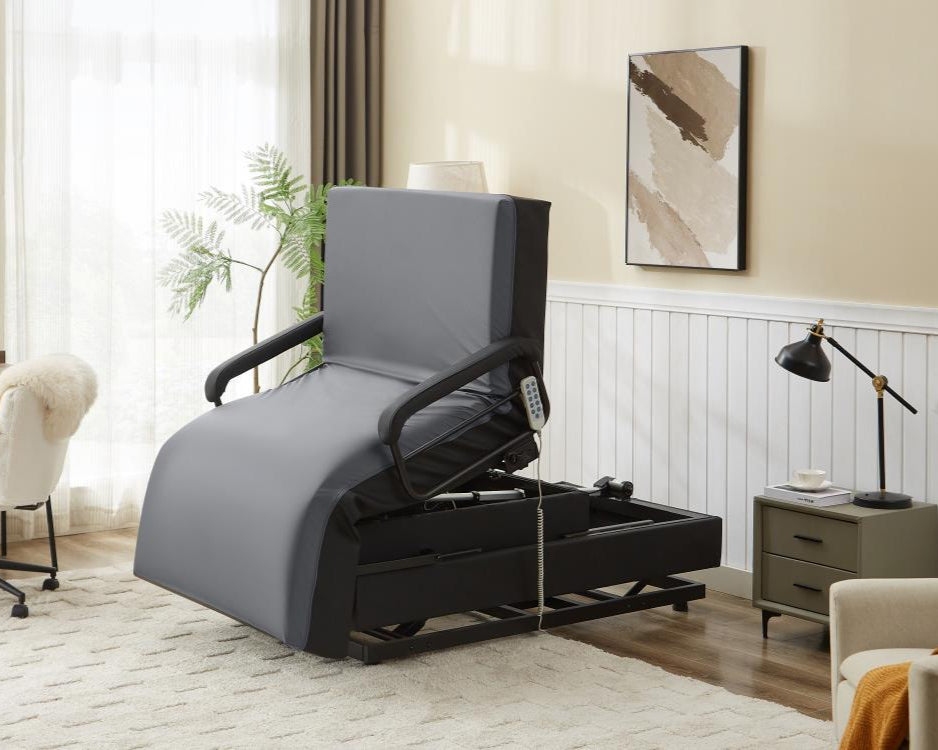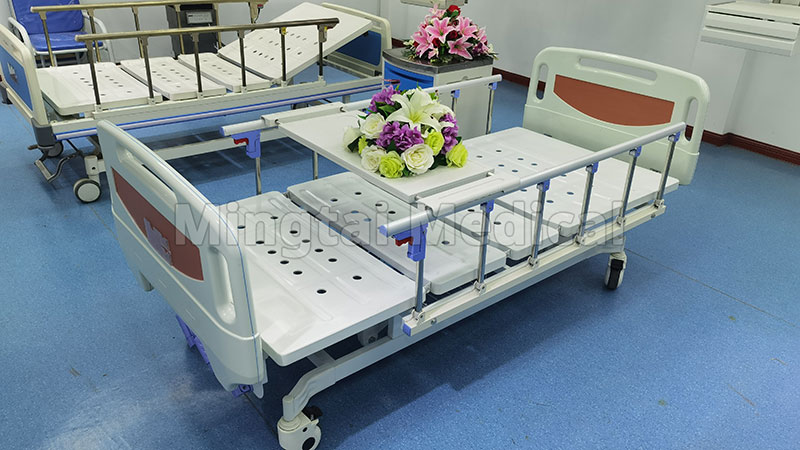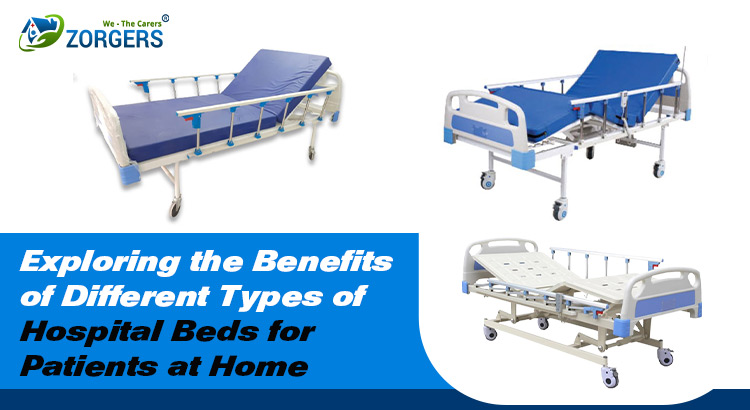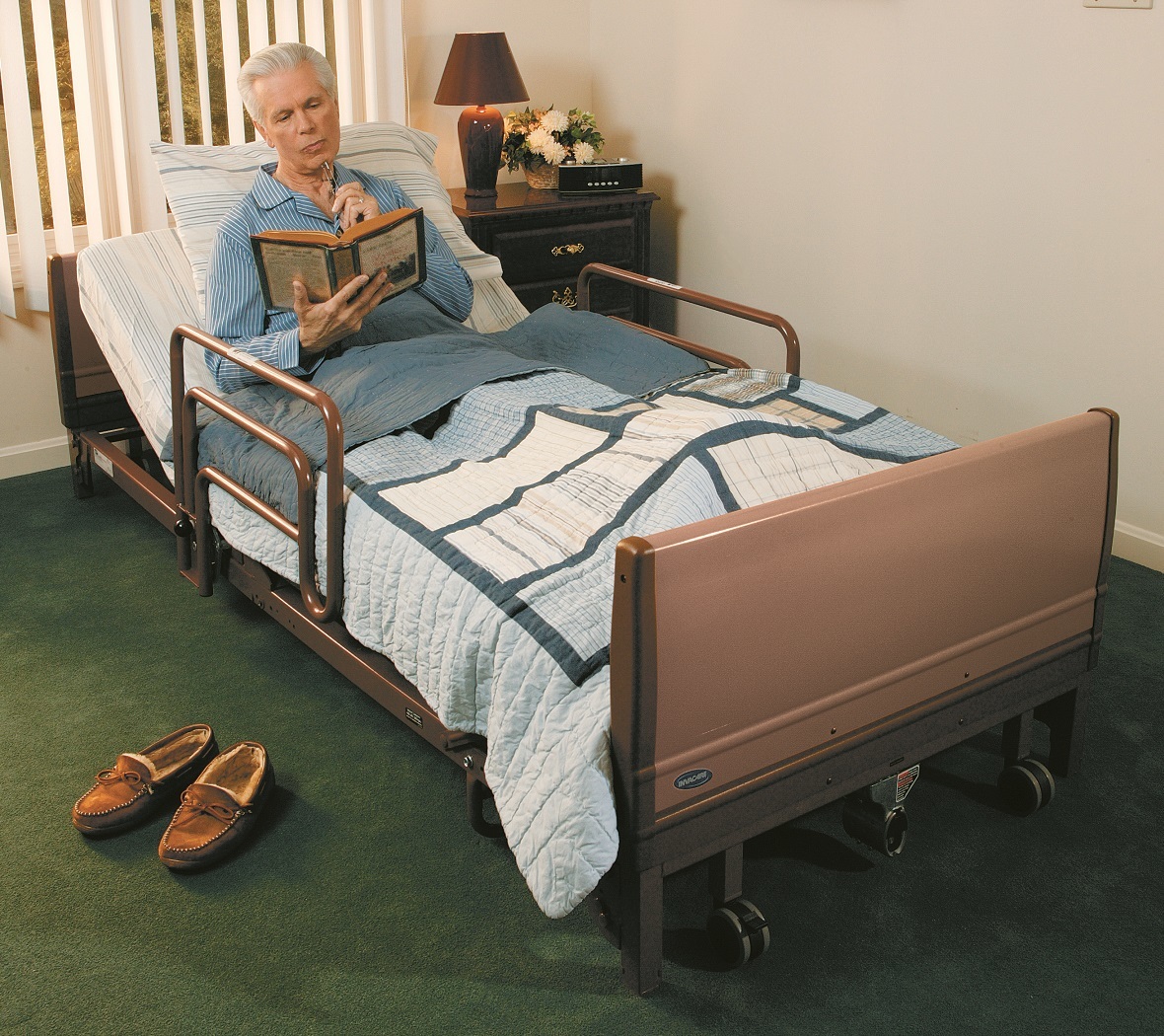The Definitive Guide to Hospital Beds For Home Use
The Definitive Guide to Hospital Beds For Home Use
Blog Article
What Does Hospital Beds For Home Use Do?
Table of ContentsHospital Beds For Home Use - An OverviewHospital Beds For Home Use - An OverviewGet This Report about Hospital Beds For Home UseThe 5-Minute Rule for Hospital Beds For Home UseHospital Beds For Home Use Can Be Fun For EveryoneNot known Incorrect Statements About Hospital Beds For Home Use Hospital Beds For Home Use for Dummies
There are 3 primary types of healthcare facility beds: handbook, semi-electric, and fully-electric. These beds use hand cranks to readjust the bed's height and raise and lower the head and the foot.
Semi-electric beds have an electrical motor to raise and reduce the head and foot portions of the bed. Patients and caregivers change the positioning by pushing switches making use of a hand pendant. The height of the bed is changed by hand with a hand crank. Full-electric beds have an electrical motor that can increase the head and foot sections of the bed along with the whole height and positioning of the bed.
What Does Hospital Beds For Home Use Mean?
There are several types of healthcare facility beds, each made to satisfy details person demands. Here are some typical kinds: This is the most usual type of hospital bed, made for general clinical use.
Reduced to the ground than a typical bed. This type of bed is developed for bigger patients, with a broader frame and greater weight capacity than a conventional bed.
This kind of bed is created for seriously sick clients that need open tracking and specialized clinical equipment such as ventilators and mixture pumps. This type of bed is made for usage during labor and distribution, with adjustable placements and attributes to support the mommy and infant during the birth procedure.
The smart Trick of Hospital Beds For Home Use That Nobody is Talking About
Numerous function and the accessories perform broadening traction to various components of the vertebra and the extremities without relocating the human body. These are simply a couple of instances of the types of hospital beds offered. The certain sort of bed used will certainly rely on the patient's condition, medical requirements, and other aspects.
Right here is the important things you need to know. A one-function medical facility bed is a clinical bed that allows an individual to move only the head or foot area up or down. A 2 function health center bed usually refers to a kind of medical bed that has two flexible features to assist clients in hospitals or treatment centers.

Indicators on Hospital Beds For Home Use You Need To Know
A 7-function ICU bed is a type of clinical bed that provides numerous flexible functions to sustain seriously ill patients in an intensive care device (ICU) (hospital beds for home use). The 7 functions generally include: Back-rest adjustment: The back-rest can be adapted to different angles to aid the person rest up or rest conveniently
Elevation adjustment: The bed can be elevated or lowered to make it easier for patients to enter and out of bed, and for caregivers to give care. Trendelenburg position: The whole bed can be tilted to advertise blood flow and flow in the body. Reverse Trendelenburg setting: The bed can additionally be tilted in the contrary direction to advertise blood flow and flow in the upper body.
While even more affordable than electrical designs, these beds need exertion for adjustments. The primary benefits of manual beds are their cost and reliability, as they do not rely upon electricity. Nonetheless, the requirement for manual initiative can be a restriction in situations where fast adjustments are essential or where caregivers face physical obstacles.
Hospital Beds For Home Use Things To Know Before You Buy
Semi-electric medical facility beds provide an visit here equilibrium of guidebook and electrical controls. These beds supply an ideal middle ground between manual and totally electrical choices, offering ease of usage without the full cost of electric designs.
Semi-electric beds are well-suited for clients who need modest changes to the head and foot areas however can handle without regular height changes. This makes them an economical remedy for those looking for comfort and benefit without the need for constant repositioning. Totally electrical healthcare facility beds feature electrical controls for smooth modifications to the height, head, and foot sections.
Specialized healthcare facility beds, such as ICU beds, long-lasting care beds, and bariatric beds, are meticulously made to address details clinical needs. These beds offer customized care for varied person groups, enhancing both outcomes and convenience. In the following sections, we will check out the major kinds of specialized health center beds, detailing their particular benefits and applications.
With years of experience in manufacturing electric direct actuators - hospital beds for home use and close partnership with the healthcare sector, TiMOTION is well-positioned to provide trusted healthcare services. Our up and down incorporated business takes care of every step of the production process, from style to actuator assembly, ensuring we supply outstanding value and personalized solutions customized to your specific requirements
The 3-Minute Rule for Hospital Beds For Home Use

To discover more regarding incorporating these technologies into your items, contact us today. More reading:.
Information is sourced from the Medicare Cost Report. Accessed January 2025. Temporary intense care medical facilities have the highest typical number of beds at 187. They are the most usual type of hospital in the U.S. and compose greater than 50% of U.S. healthcare facilities. Kid's medical facilities have 178 beds usually and VA healthcare facilities average 175 beds.

More About Hospital Beds For Home Use
A healthcare facility bed is a bed created particularly for medical purposes. It is not just an area for individuals to rest, but also a system for clinical operations. Unlike regular home beds, health center beds normally have adjustable features, which can facilitate medical personnel to make various adjustments according to the needs of patients, such as transforming the height, inclination, and support angle of the back and legs of the bed.
Report this page